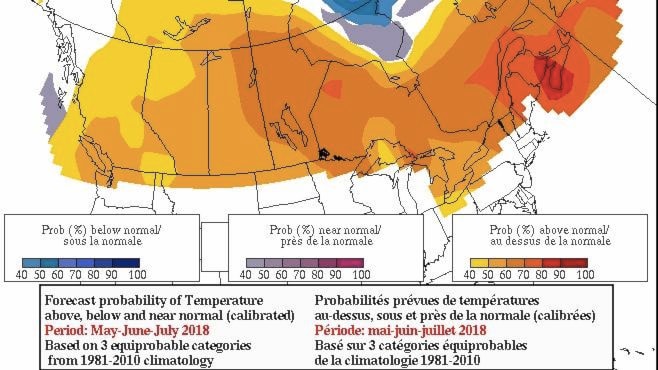As Houston recovers from the recent flooding, another concern is lurking on the horizon - wildfires.
The Northwest Fire Centre had 15 wildfires between April 1 and May 22, compared to 11 during the same period last year.
“We are certainly seeing warmer and dryer than normal conditions for this time of year, which has bumped the fire danger rating up to higher than usual levels as well,” said Kevin Skrepnek, B.C. Wildfire Service’s chief fire information officer.
For most of last week Houston had a “moderate” fire danger rating, which means that forest fuels are drying and there is an increased risk of surface fires starting.
Across the province, there were a total of 182 wildfires between April 1 and May 22. Of the 182 fires, 118 were human-caused.
“While a lot of these recent fires were the result of lightning, human activity is usually the key driver of fire starts at this time of year,” said Skrepnek. “That could stem from people conducting open burning on their property, industry activity, railways, abandoned campfires and discarded cigarettes.”
“Thankfully none of the incidents so far have posed any significant threats to communities and infrastructure,” he continued.
Between April 1 and May 22, the Houston region had two small wildfires - near Elwin Lake and Walcott Forest Service Road. Both of these fires were likely human-caused, according to the B.C. Wildfire Centre.
In terms of the outlook for the 2018 wildfire season, Skrepnek says it’s still too early to tell what B.C. will be facing.
“Environment Canada models are suggesting a warmer than normal summer, but rain is a key factor for fire activity and is nearly impossible to forecast with any certainty more than a few days ahead of time,” he explained. “In 2017 we had a wet spring, but June was exceptionally dry and really set the stage for how destructive the rest of the summer was.”
The summer of 2017 will be remembered as one of the worst wildfire seasons in B.C.’s history, burning over 1.2 million hectares of land and costing the province over $568 million.
READ MORE: Most B.C. residents didn’t feel their city was prepared for wildfire season: report
“While we don’t yet have a crystal clear picture of what 2018 will look like, suffice to say we will have a wildfire season - it’s a fact of life in this province,” said Skrepnek. “With that in mind, we definitely want people to start preparing.”
Skrepnek encourages people who live in fire-prone areas to familiarize themselves with the FireSmart program, which helps homeowners identify the changes they can make to protect their homes.
“There’s some very easy steps people can take now to make their home and property more resilient to fire before we get to the dog days of summer,” he added.
More information about the FireSmart program can be found online at https://www2.gov.bc.ca/gov/content/safety/wildfire-status/prevention/for-your-home-community.
As of May 24, the Northwest Fire Centre did not have any fire bans and restrictions in place. An existing category two open burning prohibition in parts of the Prince George Fire Centre was be expanded on May 17 to include the entire fire centre.
Province taking action
In advance of the 2018 wildfire season, the province has been acting on some of the recommendations in the report ‘Addressing the new normal: 21st century disaster management in British Columbia.’
The report is an independent review of B.C.’s response to the 2017 wildfires and flooding.
RELATED: B.C. adds funding to re-grow forests damaged by 2017 wildfires
As a result of internal reviews undertaken by both the B.C. Wildfire Service and Emergency Management B.C., 19 of the 108 recommendations in the report are being implemented.
One of the recommendations being acted on is the development of emergency management toolkits for Aboriginal communities, which have been widely distributed.
Government will develop an action plan to address the report’s recommendations by Oct. 31, 2018.
@flavio_nienow
flavionienow@gmail.com
Like us on Facebook and follow us on Twitter.
